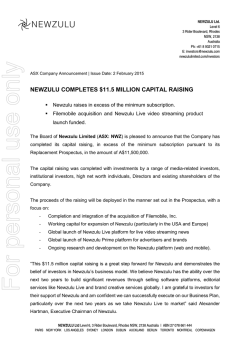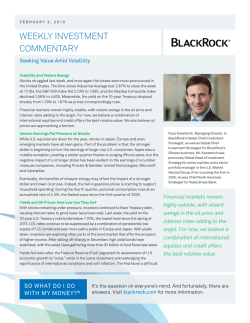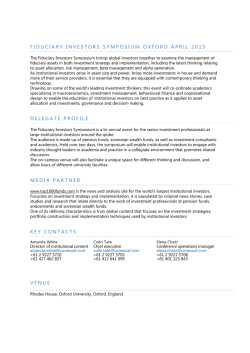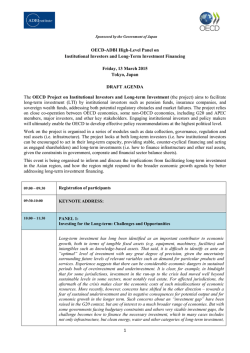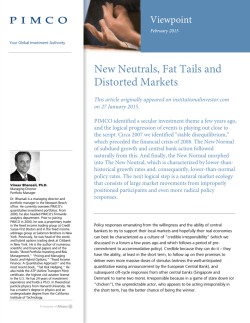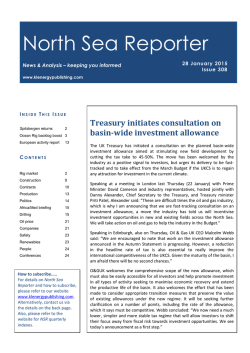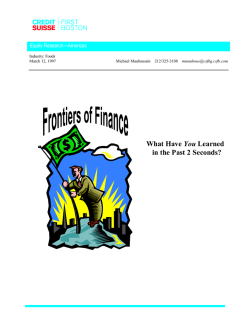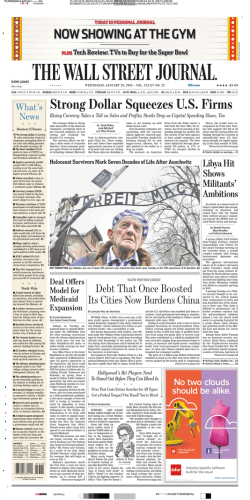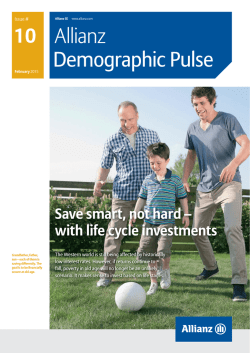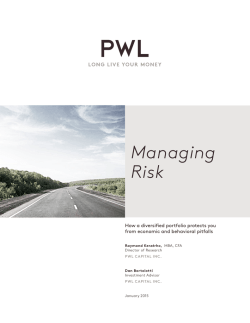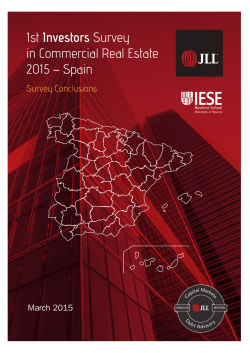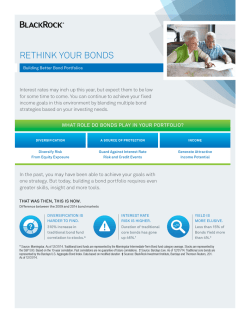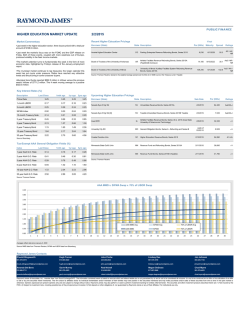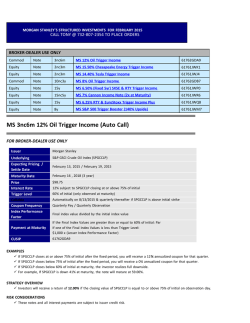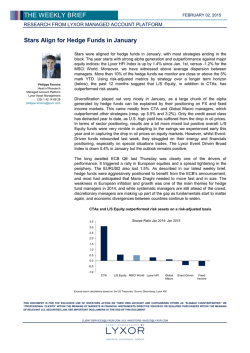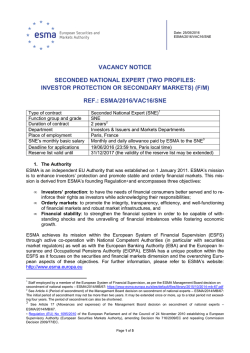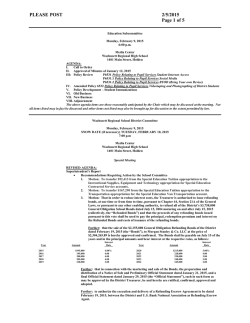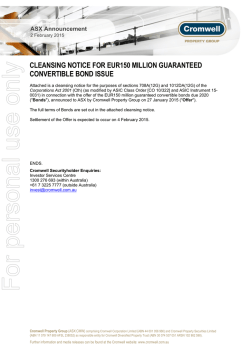
Read the full version of this In Focus feature as a PDF document
IN FOCUS A s the US Federal Reserve closes its Quantitative Easing (QE) program, investors in fixedincome markets are being warned to expect some volatility. A natural response to expectations of volatility is to seek the proven benefits of diversification – reducing risk by investing in a broader range of securities that have a low correlation of returns. Earlier this year Rick Rieder, BlackRock managing director, chief investment officer of fixed income, fundamental portfolios, and co-head of Americas fixed income, issued a paper suggesting that it was “a good time for a fresh look at a wide range of fixed-income strategies”. BlackRock said that even as the Fed tapered its QE program, the European Central Bank (ECB) and Bank of Japan (BoJ) were stepping up theirs. This represents a significant shift in the balance of policy stimulus – and for the first time since the global financial crisis (GFC), it means a rise in US interest rates is being contemplated. Understanding what the shift in global dynamics means for currencies, interest rates and for potential economic growth – and getting it right – will be the focus for all investors in the next three to five years. “None of these developments threatens the foundational role of bonds in institutional and individual portfolios,” the BlackRock paper said. “But they do portend continued change in fixed-income markets – and, we believe, make a more diversified approach to fixed-income strategy worth considering.” Hayden Briscoe, AllianceBernstein’s director of Asia Pacific fixed income, says the end of the Fed’s QE “may have a greater impact on global markets than is currently expected”. “At this stage, our view is that investors may want to brace for some volatility ahead,” Briscoe said, in a note issued in October. Briscoe said the withdrawal of the Fed’s QE program was likely to have a bigger impact on global markets than “anything the BoJ or ECB are likely to do”. “That calls for investors to be cautious, in our view,” he said. “Looking back at how QE affected all asset markets, the same could apply in reverse, as well. Investors, in our view, should be thinking about risk reduction.” Investors in fixed-income markets need to be ready for potentially lower returns, and should be cautious about chasing superficially attractive alternative sources of higher yields. Simon Hoyle reports. LOWER FOR LONGER Robert Mead, a managing director and head of portfolio management in Australia for PIMCO, says that the likely direction of interest rates in the coming three to five years can’t necessarily be accurately gauged by looking at what’s happened before. “The ‘new neutral’ means interest rates are going to stay lower for much longer,” Mead says. “Trying to look at historical rate cycles or listening to the fearmongers [saying] rates are too low and they’ll have to go up significantly, I think is the last thing that planners or anyone else should be listening to…because it’s completely invalid. “The reason rates have to stay lower for much longer is because the global system is still highly levered. Since the financial crisis, there’s essentially been no delevering of the global financial system. All that’s happened is leverage has moved from one pocket to another.” Low-riding fashion here to stay 30 PROFESSIONAL PLANNER Dec 2014 – Jan 2015 www.professionalplanner.com.au Concerned about rising rates? PIMCO has the answers. As interest rates remain at historically low levels and global markets continue to evolve, investors may become concerned about the potential impact on their portfolios. PIMCO can help you guide your clients through today’s investment landscape. Drawing on the experience and insights of our global network, PIMCO’s bond strategies offer a framework for conversations with your clients to address their needs and help meet their investment objectives in an evolving market. Find the answers at pimco.com.au/theanswers ALTERNATIVES. BONDS. EQUITIES. INCOME. Past performance is no guarantee of future results. The services and products provided by PIMCO Australia Pty Ltd (ABN: 54 084 280 508, AFSL: 246862) are only available in Australia to persons who come within the category of wholesale clients as defined in the Corporations Act 2001. They are not available to persons who are retail clients, who should not rely on this communication. Before making an investment decision investors should consider, with or without the assistance of a securities adviser, whether the information contained herein is appropriate in light of their particular investment needs, objectives and financial circumstances. Information contained herein has been obtained from sources believed to be reliable, but not guaranteed. No part of this publication may be reproduced in any form, or referred to in any other publication, without express written permission. © PIMCO, 2014. IN FOCUS THE ‘NEW NEUTRAL’ MEANS INTEREST RATES ARE GOING TO STAY LOWER FOR MUCH LONGER Mead says the corporate sector has been effective at delevering, and that’s why corporate bonds have been attractive investments, but virtually all consumers outside the US have done very little. Australian consumers are actually more highly levered that before, he says, and governments around the world have “levered up considerably”. “The reallocation of that leverage has been significant, but at the absolute level there’s really been no delevering,” he says. “So given that backdrop, the key message is: first of all, bonds can still play a very important role in the portfolio, not only as an income generator, and they continue to tick that box; but also as an anchor to all the other risk assets that are being held by investors.” Mead says investors should not look to the past as a guide to likely bond yields over the next three to five years. “They will be much, much lower,” he says. Mead says the Australian economy is currently relatively weak, which is why interest rates are currently low, but even when the economy moves back to a more normal growth rate, the RBA’s ability to raise interest rates will be constrained. “The RBA would only be able to get back to around 3.5 per cent before it started to be a restrictive force on economic growth once again – much, much lower than we’ve seen in historic interest rate cycles,” he says. “So in that context, the fear around bonds should be dismissed. Even if we miraculously move into a much stronger growth profile for the Australian economy, interest rates can’t move that far before they start to become a restrictive force on economic growth again; and sure enough they’ll have to start coming back down if they start to hamper any additional growth potential, given the backdrop of a high level of leverage.” BEWARE THE WORST OF BOTH WORLDS If the outlook for bond yields in coming years is historically subdued, investors would be forgiven for looking to alternatives to traditional fixed-income securities. These alternatives include hybrid securities issued by banks. “Alternative forms of income, whether it be in contingent convertible form or hybrid form, there can be a place for them in a portfolio, but it shouldn’t be as a substitute for your core fixed income,” Mead says. “It can very sensibly be a substitute for risk assets, because they have risk associated with them, both in terms of mark-to-market risk and also capital risk. If you’re being paid for that risk then those instruments make perfect sense. “But I think it would be a complete mistake to completely fund that allocation out of the bond or risk-free or low-risk or defensive component [of a portfolio].” The fixed income investment group FIIG has warned that a particular style of hybrid security – called a bail-in hybrid, or contingent convertible security (CoCos) – is likely to perform much more like an equity than a bond in a market downturn. 32 PROFESSIONAL PLANNER Dec 2014 – Jan 2015 That’s probably the last thing an investor expects or wants if they have allocated money to a security for its presumed defensive qualities. FIIG’s head of markets, Craig Swanger, said in a paper published in late August that the hybrids in question were issued to provide capital to banks in the event of a repeat of a crisis like the GFC of 2008-09. But they are designed to convert to equity – with no reference to investors before doing so – at precisely the wrong moment: when a bank is “in trouble but still a going concern”. “Investors in these new securities will take a significant haircut on their capital when they convert,” Swanger said. While the securities might display fixedincome-like characteristics and exhibit a superficially attractive high yield prior to conversion, Swanger said regulators regard them as equity, not as bonds, for the banks’ capital adequacy purposes. “Fixed income is supposed to protect investors in a downturn and provide regular, reliable income throughout the cycle,” Swanger said. “Hybrids failed to offer protection in 2008-09, but the major banks’ bonds – without the bail-in provisions – fell just 2 to 3 per cent, and recovered immediately. “Bank equities fell by 40 per cent on average, but you accept that risk because you also have the chance for upside, as investors that held on to their bank stocks have now found. “With these hybrids, you get neither the protection of bonds nor the upside of equities.” www.professionalplanner.com.au
© Copyright 2026
